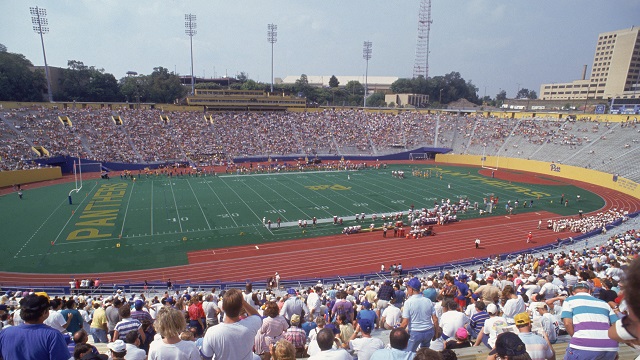I've often wondered why Pitt went with the poured concrete look for so many of their buildings. The whole campus would have looked so much better if they had built most of the buildings out of brick, in my opinion. The poured concrete looks so sterile. Too late now, of course.
It's all a function of the architectural soup du jour. Pitt became state-related in 1966, and went through a major expansion of its student population and facilities right at the height of popularity of
Brutalist architecture, which was very trendy in academia. Most universities have at least some brutalist buildings because of baby boomer expansion of campuses around this time. I swear 90% of campuses I've been on, no matter how traditional those campuses are, built new, larger library buildings in the 60s or 70s and they're all brutalist monstrosities.
Pitt's brutalist structures are actually fancier than most. Traditionally brutalism is just exposed concrete, but Pitt clad their brutalist buildings, like Posvar Hall, with limestone to mirror the limestone cladding of the Cathedral of Learning. And still today, all current campus construction in visual range of the Cathedral is supposed to reflect this limestone in deference to the Cathedral.
As with many fashion trends the fall out of favor, they often come to be appreciated with time. Appreciation of brutalism is having a bit of a
resurgence, believe it or not.
But regarding brick, the original campus plan when Pitt moved from the North Side to Oakland in 1908 was the neo-classical acropolysis plan such is seen in styles of Thaw Hall and Allen Hall. The university quickly ran out of money and that plan was never executed anywhere near what was intended. Beginning in the 20s, the plan and style shifted to neo-gothic campus anchored by the Cathedral of Learning. An entire series of buildings was planned in the gothic style, but only the Falk School, Heinz Chapel, the Stephen Foster Memorial, and Clapp Hall were added, with the last (Clapp) not really being executed anywhere near full gothic extravagance (and actually has quite a bit of art deco). That then gave way to the 60s to some international style buildings like Scaife and the Graduate School of Public Health, but then brutalism came into vogue and you got Litchfield Towers, Hillman, David Lawrence, Benedum, Barco, and Posvar. By the 80s, brutalism had fallen out of favor and Pitt started building in other styles. Along the way, Pitt's has purchased other buildings of all types of architectural styles for repurposement, like the William Pitt Union (former Schenley Hotel), Schenley Quad (former Schenley Apartments), and Bellefield Hall (former WMHA), and several of these are brick, but Pitt has never really constructed much in traditional red brick.
I do wonder what would be if more of the gothic plan had been implemented. There were plans for a gothic gymnasium, union, library, dormatories, and other academic buildings all centered on or around the Cathedral lawn.
